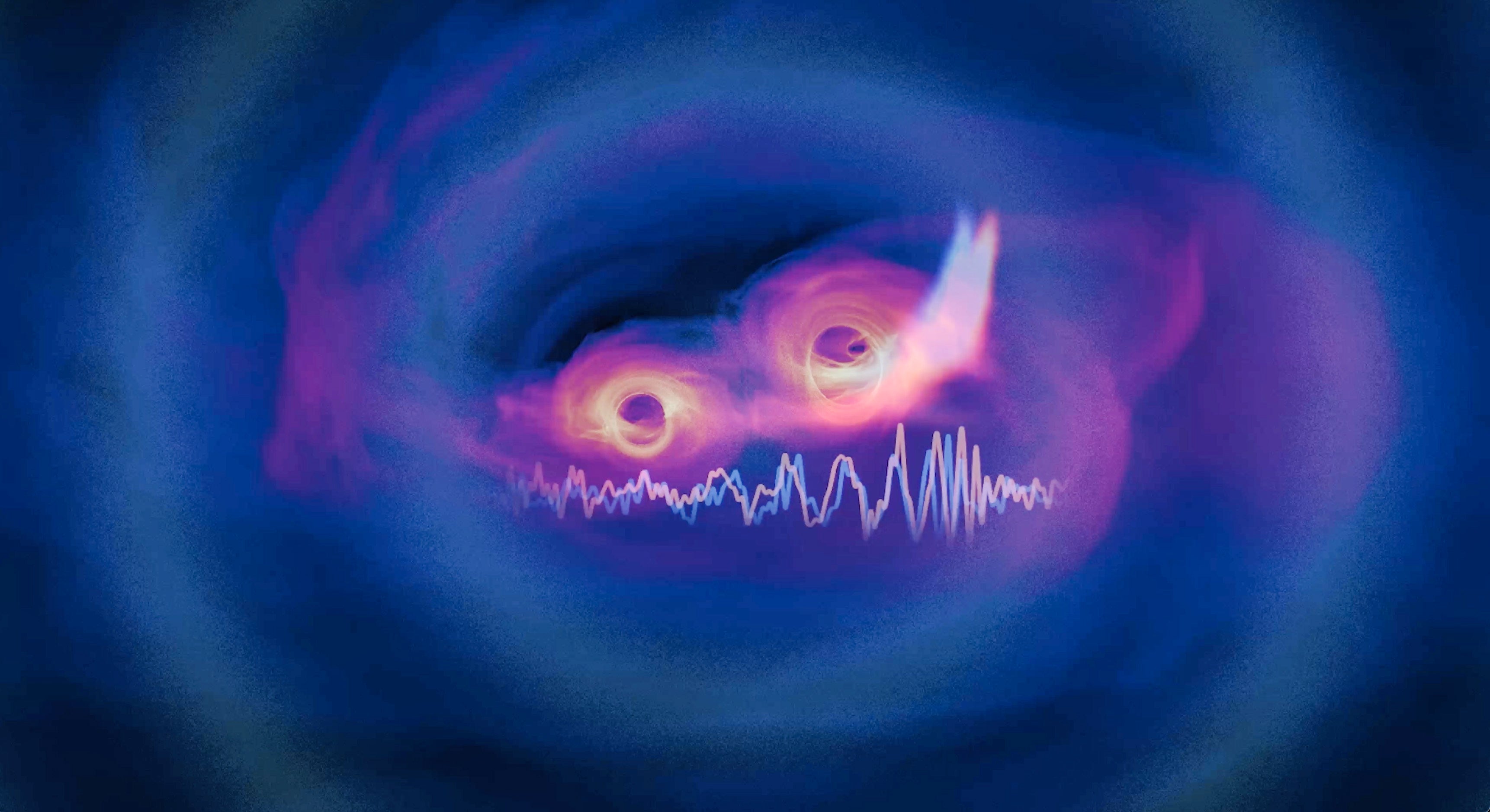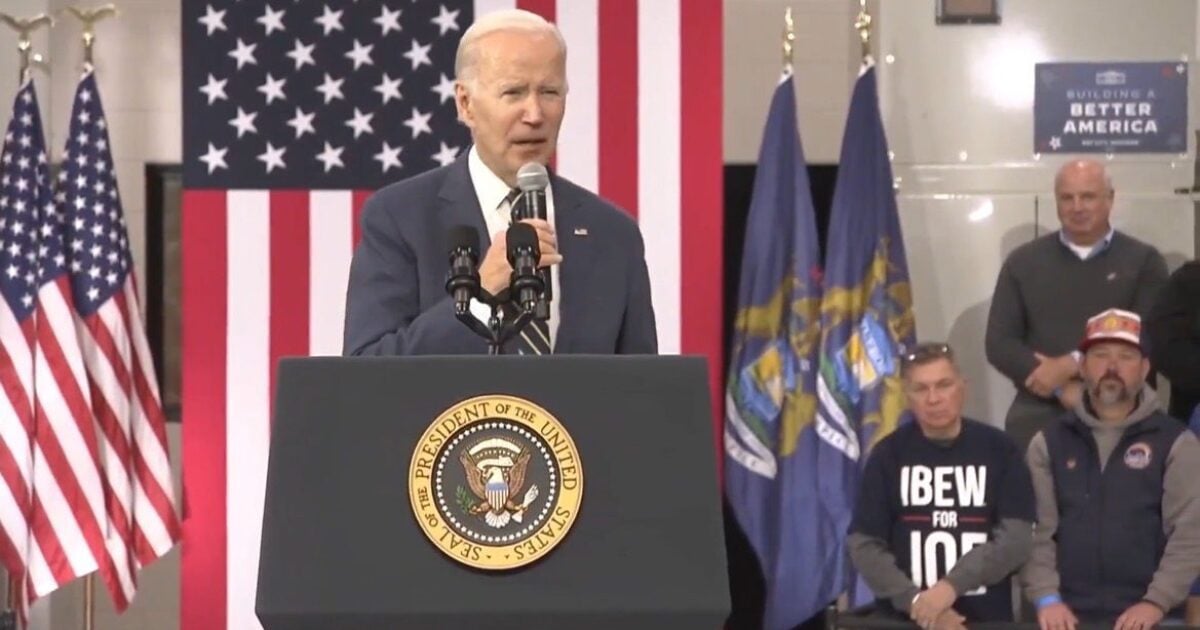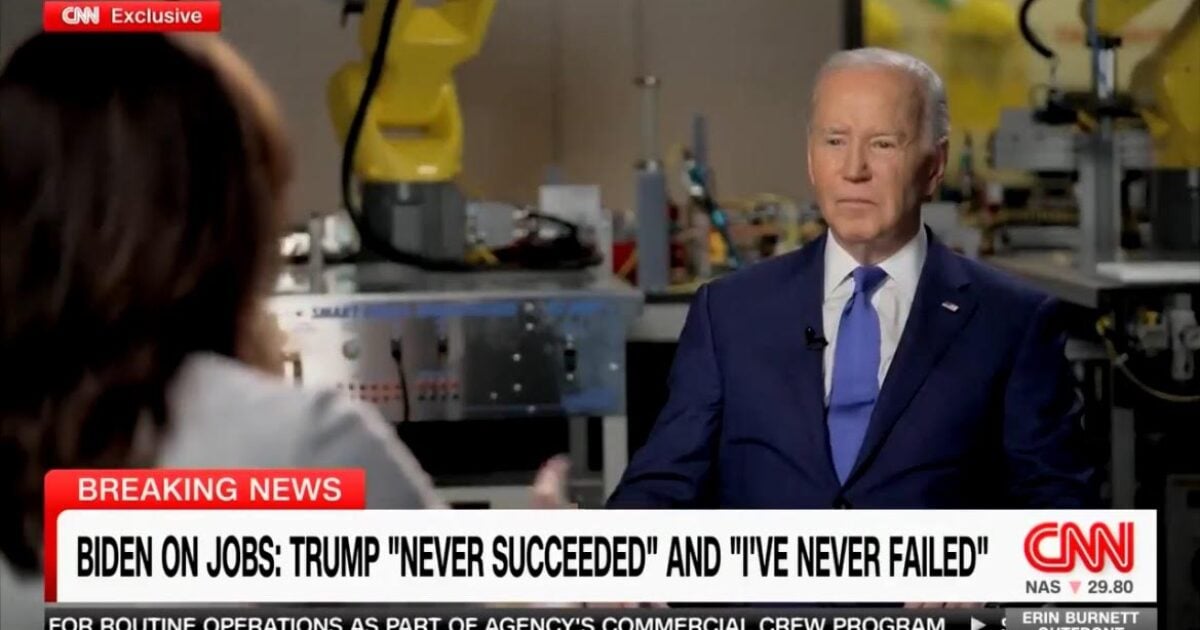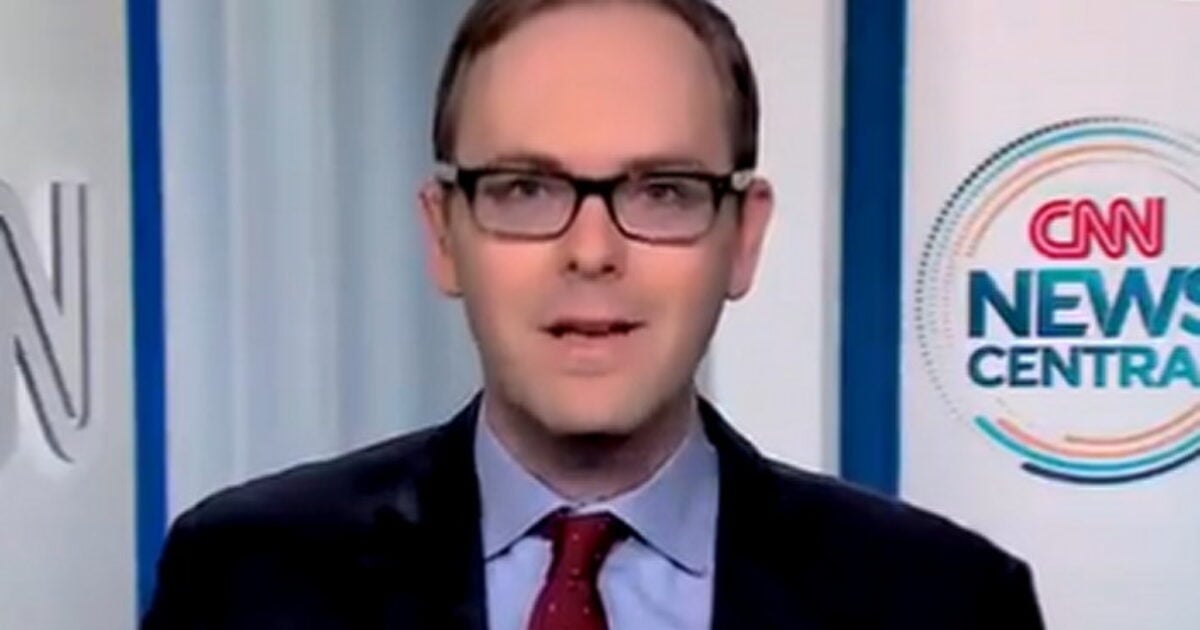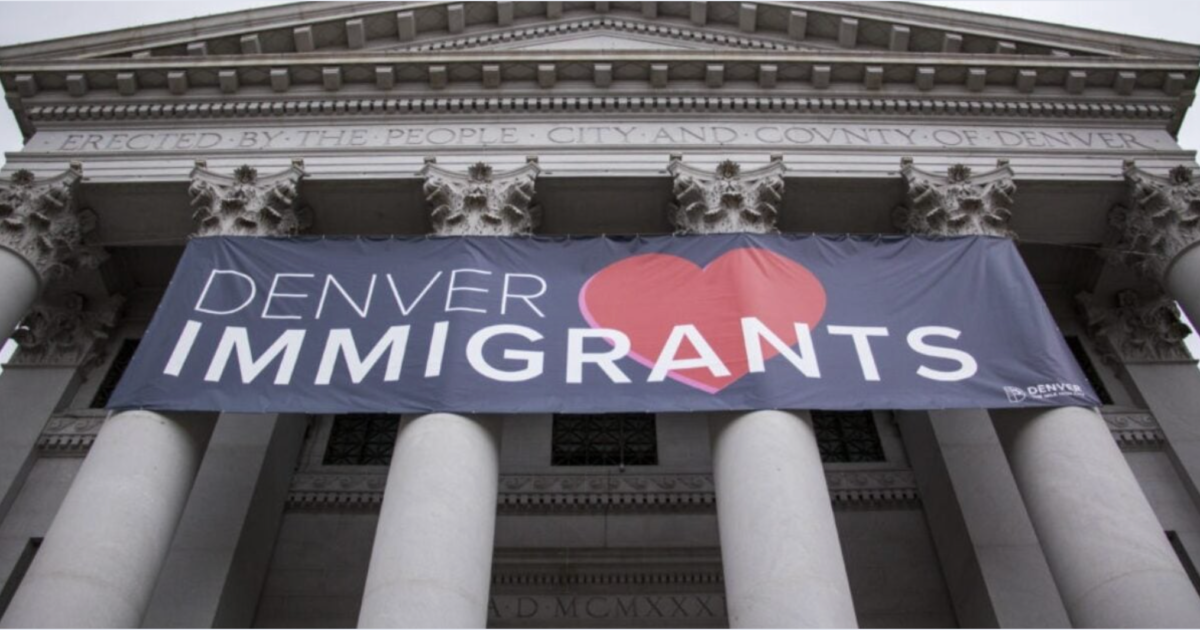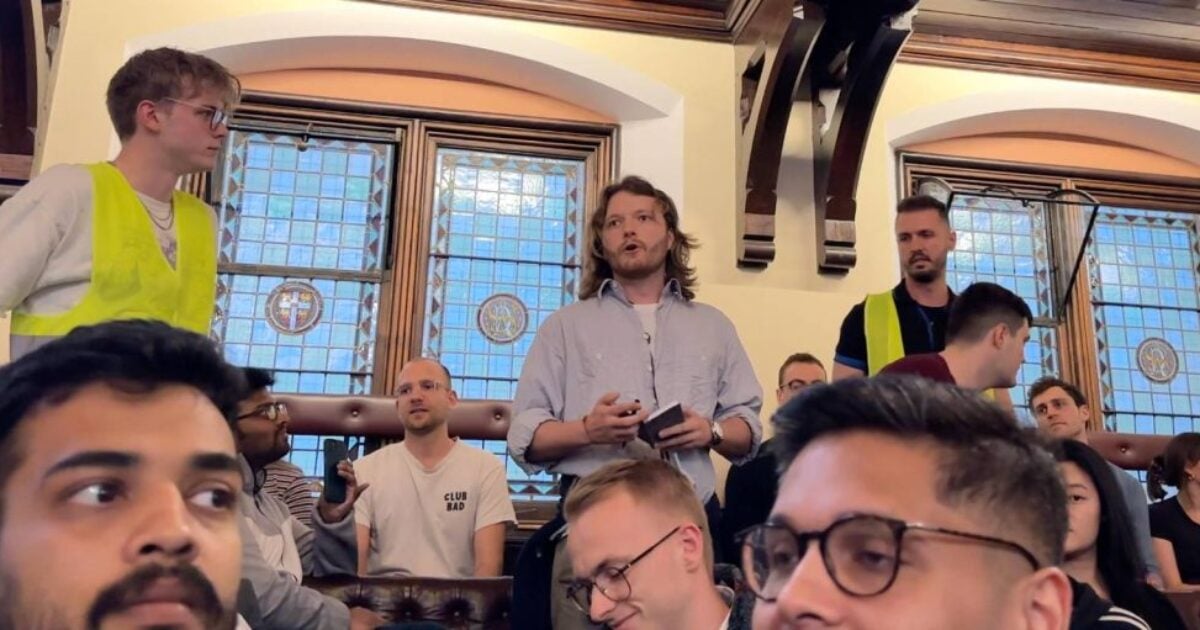Some of the most violent cosmic collisions occur silently in the vacuum of space, but with the right instrumental ears, we can still hear it happen. Here’s how.
When two black holes slam together, they don’t make a sound. And yet, this is what we hear if we listen closely.
[CLIP: Black hole “chirp”]
Let’s listen again.
[CLIP: Black hole “chirp”]
That “chirp” is what we heard from two black holes that slammed together about a billion light-years from Earth. The tone rises as they spiral closer together, and abruptly stops when they merge.
But sound can’t travel through the vacuum of space. So what exactly are we hearing?
Each of these black holes weighs as much as several stars; hefty enough that as they pass through space they make waves— gravitational waves, specifically.
These waves are undulations in the fabric of spacetime that fan outwards at the speed of light, like ripples on a cosmic pond.
Albert Einstein predicted this phenomenon in 1916, based on his theory of general relativity, but was skeptical that gravitational waves could ever be detected.
Even the strong ones from colliding black holes produce ripples roughly a thousandth the size of a proton.
It took almost a century for scientists to prove him wrong.
Today they have built–and are expanding–a global network of observatories that has so far detected gravitational waves from about 100 cosmic collisions.
Recorded, analyzed, and converted to sound, each one’s jostling of spacetime becomes its own distinctive, data-rich “chirp.”
Let’s listen again:
[CLIP: Black hole “chirp”]
That long, low buildup is a sign of a slower, more sedate merger from relatively lightweight in-spiraling black holes.
A more abrupt chirp, like this: [CLIP: Black hole “chirp”]
is a sign of a faster merger of heavier black holes…
In this case a pair that combined to form one over 80 times the mass of our Sun.
Now, after a long hiatus for upgrades and the COVID pandemic, the world’s gravitational-wave observatories are tuning back in to this celestial symphony
Gravitational wave observatories don’t have mirrors or lenses like normal telescopes.
Instead they use lasers beamed down long tunnels, laid out like L’s, with two arms laying flat against the ground.
Bounced between mirrors at the ends of each arm, the lasers act like violin strings, producing slightly different frequencies as their paths through space are stretched or contracted by passing gravitational waves.
Shorten the laser and just like a violin string, you get a higher pitch. Lengthen it and you get a lower pitch. Convert all this laser vibrato to sound, and you can even hear black holes collide with a “chirp.”
Scientists have built a number of these laser-based ears around the globe to listen to gravitational waves from cosmic sources.
One, called LIGO, has two detectors–one in Hanford, Washington and another in Livingston, Louisiana.
There’s also the VIRGO observatory near Pisa, Italy, and the KAGRA detector in Hida, Japan.
Another detector is scheduled to be built in India.
Cross-checking between these observatories confirms each event is more than random noise; if the same ripples appear in each one, they must come from somewhere in the sky.
Timestamping a wave’s exact arrival time in each arm of an observatory–and at each different observatory around the world–helps pinpoint the wave’s direction and source location.
And the chirps picked up by these detectors can sometimes reveal much more than the final moments of merging massive bodies.
If astronomers get lucky enough to detect both gravitational waves and light from some celestial smash-up as happened in 2017 with a neutron-star merger called GW170817.
That rich dataset allows them to measure the expansion rate of the universe and perform better tests of Einstein’s general relativity.
GW170817 even showed scientists how much gold, platinum and other heavy metals these sorts of high-energy explosions hurl into the cosmos.
Currently, there are 93 confirmed mergers. During the next 18 months, astrophysicists hope to double their catalog of crashes, turning once-rare chirps into a cosmic chorus–a growing soundscape of the universe’s most epochal–and otherwise silent–collisions.


